Home>Garden Essentials>When To Plant Butterfly Pea Seeds
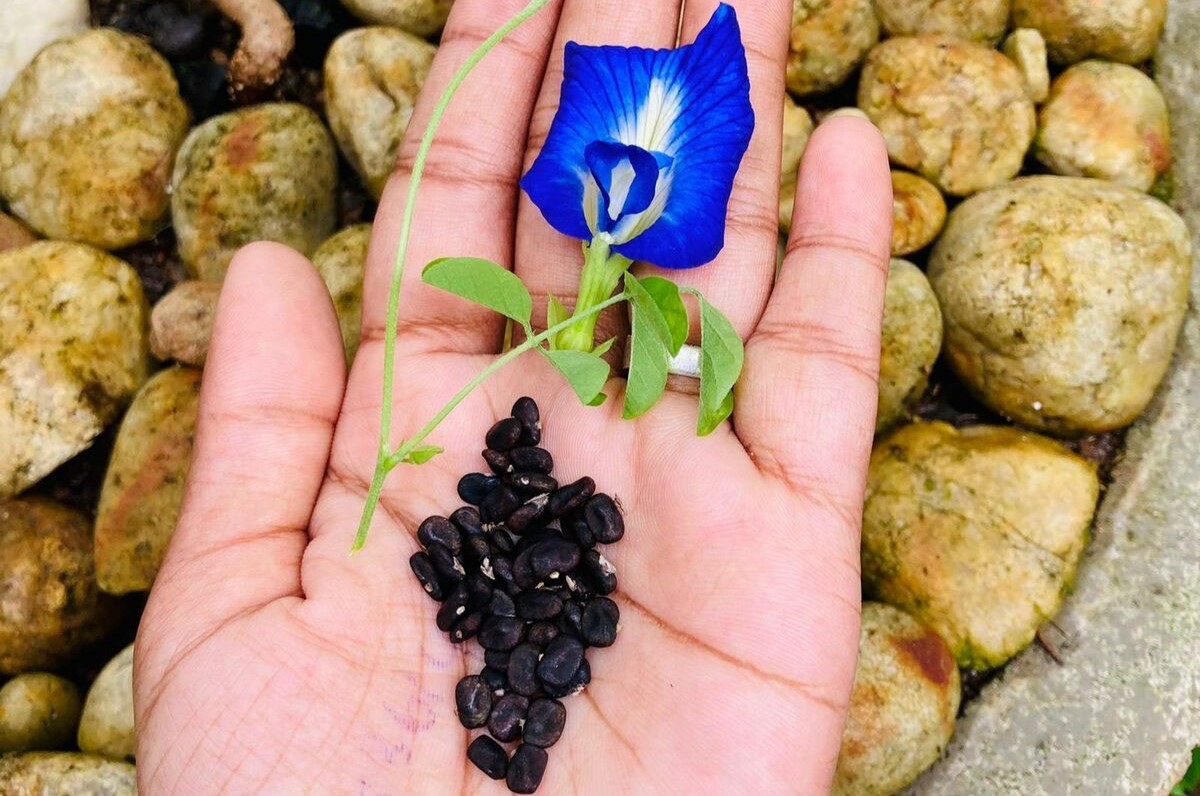

Garden Essentials
When To Plant Butterfly Pea Seeds
Modified: March 15, 2024
Looking to enhance your garden? Discover when to plant butterfly pea seeds for a vibrant and stunning addition to your outdoor space.
(Many of the links in this article redirect to a specific reviewed product. Your purchase of these products through affiliate links helps to generate commission for Storables.com, at no extra cost. Learn more)
Introduction
Welcome to the fascinating world of butterfly pea plants! Whether you’re an experienced gardener or just starting out, planting butterfly pea seeds can be a rewarding venture. These beautiful plants, scientifically known as Clitoria ternatea, are native to Southeast Asia and are well-loved for their vibrant blue flowers and numerous medicinal properties.
Butterfly pea plants are not only visually stunning but also have a rich cultural history. They have been used for centuries in traditional Ayurvedic and Chinese medicine for their potential benefits to human health. The plant contains antioxidants, flavonoids, and alkaloids, which contribute to its therapeutic properties.
If you’re interested in adding this unique and beneficial plant to your garden, keep reading to learn when and how to plant butterfly pea seeds. Whether you choose to cultivate them indoors or outdoors, understanding the ideal growing conditions, proper timing, and care techniques will ensure successful germination and flourishing plants.
Whether you’re a butterfly enthusiast, herbalist, or simply drawn to the allure of this plant’s enchanting blue blooms, now is the perfect time to embark on your journey to cultivate butterfly pea plants.
Key Takeaways:
- Plant butterfly pea seeds indoors 6-8 weeks before the last frost for a head start. Choose a warm, well-lit area and transplant after 4-6 weeks for vibrant blooms.
- Harvest butterfly pea flowers at their peak and save seeds for future planting. Enjoy the beauty and benefits of these stunning blue blooms.
Read more: When To Plant Pea Seeds
Climate and Growing Conditions
Before you start planting butterfly pea seeds, it’s essential to understand the climate and growing conditions that are optimal for their growth. Butterfly pea plants thrive in tropical and subtropical regions and require warm temperatures to flourish.
Ideal temperatures for butterfly pea plants range between 75°F (24°C) and 90°F (32°C). They can tolerate temperatures as low as 50°F (10°C) but may not grow vigorously in cooler climates. If you live in a region with colder winters, consider growing butterfly pea plants indoors or as annuals during the warmer months.
In addition to temperature, butterfly pea plants require ample sunlight to grow and develop their vibrant blue blooms. Aim for at least 6 to 8 hours of direct sunlight per day. If you live in an area with hot summers, providing some shade during the peak afternoon hours can help prevent heat stress on the plants.
When it comes to soil, butterfly pea plants prefer well-draining, loamy soil. The pH level should be slightly acidic to neutral, ideally between 6.0 and 7.0. If your soil tends to be heavy and retains water, amending it with organic matter such as compost or well-rotted manure will improve drainage and nutrient availability.
It’s important to note that butterfly pea plants are sensitive to frost. If you live in an area prone to late spring frost, consider starting the seeds indoors and transplanting them after the last frost date.
By providing the right climate and growing conditions, you’ll create an environment that fosters healthy growth and abundant blooms for your butterfly pea plants.
Choosing the Right Timing
Choosing the right timing for planting butterfly pea seeds is crucial for successful germination and growth. The timing will vary depending on your climate and the specific characteristics of the butterfly pea variety you’re cultivating.
Butterfly pea seeds can be started indoors or directly sown outdoors, depending on your preference and the growing season in your area. To determine the ideal timing, it’s helpful to know the average last frost date in your region.
If you decide to start indoors, sow the seeds 6 to 8 weeks before the last expected frost. This will give the seedlings enough time to grow and become sturdy before transplanting them outdoors. Starting indoors allows for better control over the seedlings’ environment, including temperature and moisture levels.
For direct sowing, wait until all danger of frost has passed and the soil temperature is consistently above 60°F (15°C). This is typically in the late spring or early summer. Butterfly pea plants are heat-loving, so make sure the soil has warmed up adequately before sowing the seeds.
Timing can also be influenced by the desired length of the growing season. If you’re looking to enjoy the vibrant blooms for a longer period, consider staggered planting. Start a few seeds indoors first and follow up with successive outdoor sowings every few weeks.
By choosing the right timing for planting butterfly pea seeds, you’ll give your plants the best chance to thrive and produce their beautiful blue flowers.
Indoor Planting
Indoor planting is an excellent option for starting butterfly pea seeds, especially if you live in a region with a short growing season or unpredictable weather conditions. It allows for better control over germination conditions and helps jump-start the growth of the seedlings.
To begin indoor planting, you’ll need seed trays or pots, a high-quality seed starting mix, and a warm and well-lit area in your home. Here are the steps to successfully plant butterfly pea seeds indoors:
- Prepare the seed trays or pots: Fill the containers with the seed starting mix, leaving about 1/4 inch (0.6 cm) of space at the top. Gently moisten the soil to provide a moist but not waterlogged environment for the seeds.
- Sow the seeds: Place two to three butterfly pea seeds on top of the soil in each tray or pot. Cover them with a thin layer of soil, approximately 1/4 inch (0.6 cm) thick.
- Provide warmth and light: Place the trays or pots in a warm location where the temperature is consistently around 75°F (24°C). Consider using a seedling heat mat to provide bottom warmth, as this can help accelerate germination. Additionally, ensure the seedlings receive at least 6 to 8 hours of direct sunlight or use grow lights to provide adequate light.
- Water regularly: Keep the soil consistently moist but not saturated. Use a spray bottle or a gentle watering can to prevent dislodging the seeds or seedlings.
- Transplanting: Once the seedlings have developed their second set of true leaves, typically after 4 to 6 weeks, they are ready for transplanting. Choose a sunny location in your garden or prepare larger pots for the seedlings.
Remember to harden off the seedlings before transplanting them outdoors. This involves gradually acclimating them to outdoor conditions by exposing them to increasing periods of sunlight and wind over the course of a week.
Indoor planting is a convenient method for starting butterfly pea seeds and ensures a head start in the growing season. It allows you to enjoy the beautiful blue blooms sooner and increase the chances of a successful harvest.
Outdoor Planting
If you prefer to sow butterfly pea seeds directly outdoors, it’s essential to choose the right location and timing to ensure optimal growth and successful germination.
Here are the steps for outdoor planting of butterfly pea seeds:
- Choose a sunny location: Select a spot in your garden that receives full sun or partial shade. Butterfly pea plants thrive in sunlight, but they can benefit from some shade during the hottest part of the day, especially in areas with intense summer heat.
- Prepare the soil: Clear the area of any weeds or debris. Loosen the soil with a garden fork or tiller to a depth of around 6 to 8 inches (15 to 20 cm). Remove any rocks or large clumps of soil that may impede the growth of the roots.
- Sow the seeds: Make shallow furrows in the prepared soil, approximately 1/2 inch (1.3 cm) deep. Space the furrows about 12 to 18 inches (30 to 45 cm) apart to allow room for the plants to spread. Place the seeds in the furrows, spacing them about 4 inches (10 cm) apart. Cover the seeds gently with soil and pat it down lightly.
- Keep the soil moist: Water the planting area immediately after sowing the seeds to ensure proper moisture. Keep the soil consistently moist but not waterlogged throughout the germination period. Use a misting nozzle or a gentle watering can to avoid disturbing the seeds.
- Thin the seedlings: After the seedlings have emerged and developed their second set of true leaves, thin them out to allow proper spacing between plants. Remove the weakest seedlings, leaving only the healthiest and most vigorous ones. Maintain a distance of about 8 to 12 inches (20 to 30 cm) between each plant.
- Care for the seedlings: Mulch the area surrounding the seedlings with organic mulch, such as straw or wood chips, to retain moisture, suppress weed growth, and regulate soil temperature. Water the plants regularly, providing about 1 inch (2.5 cm) of water per week, either through rainfall or irrigation.
By planting the butterfly pea seeds directly outdoors, you allow the plants to adapt to their natural environment from the beginning. With proper care and favorable conditions, you will soon witness the beautiful blue blossoms adorning your garden.
Read more: When To Plant Sweet Pea Seeds
Soil Preparation
Proper soil preparation is essential for providing your butterfly pea plants with the necessary nutrients, drainage, and a favorable environment for root development. Taking the time to prepare the soil before planting will greatly benefit the growth and overall health of your plants.
Here are the steps for soil preparation:
- Clear the area: Start by clearing the planting area of any weeds, rocks, or debris. This will ensure that the soil is free from competing plants and obstructions.
- Loosen the soil: Use a garden fork or a tiller to loosen the soil to a depth of about 6 to 8 inches (15 to 20 cm). This will promote better root penetration and allow for proper water drainage.
- Amend the soil: Depending on the quality of your soil, you may need to amend it with organic matter to improve its fertility and structure. Adding compost, well-rotted manure, or peat moss will enrich the soil with essential nutrients and aid in moisture retention.
- Test the soil: Consider conducting a soil test to determine the pH level and nutrient content of your soil. Butterfly pea plants prefer a slightly acidic to neutral pH range of 6.0 to 7.0. If your soil pH is outside of this range, you can make adjustments using organic soil amendments or lime.
- Incorporate organic matter: Mix the organic matter into the loosened soil using a garden fork or a tiller. This will ensure that the nutrients are evenly distributed and improve the soil’s overall structure and fertility.
- Level the soil: Smooth out the soil surface with a rake, removing any large clumps or debris. This will provide a level and uniform planting area for your butterfly pea seeds or seedlings.
By adequately preparing the soil before planting, you create an optimal growing environment for your butterfly pea plants. The nutrient-rich and well-draining soil will support healthy root development and provide the essential elements needed for vigorous growth and abundant flowering.
Seed Treatment
While butterfly pea seeds generally have a good germination rate, treating them before planting can help enhance their viability and increase the chances of successful germination. There are a few seed treatment methods you can consider to improve the overall germination process.
Here are a few seed treatment options for butterfly pea seeds:
- Scarification: Butterfly pea seeds have a hard seed coat that can inhibit germination. Scarification involves breaking or thinning the outer seed coat to allow water absorption and promote germination. You can achieve scarification by gently rubbing the seeds with sandpaper or soaking them in warm water for 24 hours.
- Soaking: Soaking butterfly pea seeds in water prior to planting can help soften the seed coat and initiate the germination process. Place the seeds in a bowl of warm water and let them soak for 24 to 48 hours. Discard any seeds that float, as they may not be viable.
- Stratification: Stratification involves subjecting the seeds to a period of cold temperatures to simulate winter conditions, which can break seed dormancy. You can achieve stratification by placing the seeds in a moist paper towel or in a plastic bag with damp vermiculite or peat moss. Store them in the refrigerator for 4 to 6 weeks before planting.
It’s important to note that not all butterfly pea seeds require treatment. Some varieties have naturally thin seed coats and do not require scarification or stratification. However, if you’re unsure, treating the seeds can still be beneficial and increase germination rates.
Remember to follow the specific instructions for seed treatment based on the recommendations for the particular butterfly pea variety you are planting. This will help break seed dormancy and give your seeds the best chance at germination success.
Sowing Butterfly Pea Seeds
Once you have prepared the soil and treated the butterfly pea seeds (if necessary), it’s time to sow them in the desired planting area. Proper sowing techniques will ensure even spacing, adequate depth, and optimal conditions for seed germination.
Here are the steps for sowing butterfly pea seeds:
- Choose the planting method: You can sow butterfly pea seeds either in rows or scattered across the planting area. Rows provide a more organized layout, while scattering the seeds creates a more natural and informal look. Choose the method that suits your preference and the overall design of your garden.
- Prepare the planting area: If you have chosen to sow in rows, use a rake or gardening tool to create furrows in the soil. The furrows should be approximately 1/2 inch (1.3 cm) deep and spaced about 12 to 18 inches (30 to 45 cm) apart. For scattering the seeds, simply prepare the soil by loosening it and ensuring it is level.
- Sow the seeds: Take the treated butterfly pea seeds and distribute them evenly along the furrows or across the planting area. Aim for a spacing of about 4 inches (10 cm) between the seeds to allow room for growth and airflow.
- Cover the seeds: Gently cover the seeds with a thin layer of soil, approximately 1/2 inch (1.3 cm) thick. Pat down the soil lightly to ensure good seed-to-soil contact without compacting the soil too much.
- Water the seeds: After sowing, water the planting area gently to provide moisture for the seeds to germinate. Use a watering can or a misting nozzle to avoid displacing the seeds or causing them to be submerged.
- Maintain soil moisture: Keep the soil consistently moist but not waterlogged during the germination period. Regularly check the soil moisture levels and adjust watering accordingly. Avoid letting the soil dry out completely, as this can hinder germination.
Butterfly pea seeds typically germinate within 7 to 14 days, depending on the conditions and treatment methods used. Be patient and continue to care for the seeds by providing adequate water and optimal growing conditions.
By following these steps for sowing butterfly pea seeds, you’ll give your seeds the best chance to sprout, grow, and develop into stunning butterfly pea plants.
Plant butterfly pea seeds in the spring after the last frost date for your area. They prefer warm soil and full sun, so wait until the soil has warmed up to at least 60°F (15°C) before planting.
Proper Watering Techniques
Water is a vital element for the growth and health of butterfly pea plants. Proper watering techniques will help ensure that your plants receive adequate moisture without becoming waterlogged, which can lead to root rot and other issues. Here are some guidelines to follow for proper watering of butterfly pea plants:
- Establish a watering routine: Consistency is key when it comes to watering. It’s important to establish a regular watering routine and stick to it. Typically, butterfly pea plants require about 1 inch (2.5 cm) of water per week, either through rainfall or irrigation. Adjust this amount based on the weather conditions and the moisture retention capacity of your soil.
- Water deeply: When you water, aim to wet the soil thoroughly. Water deeply to encourage the roots to grow deeper into the soil. Shallow watering can result in shallow root growth, making the plants more susceptible to drought stress.
- Avoid overwatering: While it’s important to provide adequate moisture, be cautious not to overwater the plants. Soggy soil can lead to root rot and other fungal diseases. The best way to determine when to water is to check the soil moisture level. Stick your finger about an inch (2.5 cm) into the soil. If it feels slightly dry at that depth, it’s time to water. If it’s still moist, wait a day or two before watering again.
- Water at the base: When you water butterfly pea plants, direct the water at the base of the plants rather than overhead. Watering from the base helps minimize the risk of fungal diseases and allows the water to reach the roots more effectively.
- Mulch to retain moisture: Applying a layer of organic mulch around the base of the plants can help conserve soil moisture and regulate soil temperature. Mulch also helps suppress weed growth, which can compete with the butterfly pea plants for water and nutrients.
It’s important to understand that the watering needs of butterfly pea plants can vary based on factors such as temperature, rainfall, and soil type. Regularly monitor the soil moisture level and adjust your watering schedule accordingly.
By following these proper watering techniques, you’ll provide your butterfly pea plants with the ideal moisture balance, ensuring their health and promoting optimal growth and blooming.
Read more: When To Plant Sweet Peas Seeds
Pest and Disease Management
Like any plants, butterfly pea plants are susceptible to certain pests and diseases. However, with proper care and attention, you can minimize the risks and keep your plants healthy and thriving. Here are some common pests and diseases that may affect butterfly pea plants and strategies for managing them:
Pests:
- Aphids: These small insects can cluster on the leaves and stems, sucking the sap and causing damage. Use insecticidal soap or a strong stream of water to dislodge them. Encourage beneficial insects like ladybugs and lacewings, which can help control aphid populations naturally.
- Caterpillars: Caterpillars, such as the larvae of the butterfly pea flower caterpillar, can feed on the foliage and cause defoliation. Handpick the caterpillars if numbers are manageable. Bt (Bacillus thuringiensis) can also be used as a biological control option.
- Whiteflies: These tiny insects may gather on the undersides of the leaves and suck plant sap, leading to yellowing and weakening of the plant. Use yellow sticky traps and apply insecticidal soap to control whitefly populations.
- Snails and slugs: These mollusks can chew on the leaves and tender shoots of butterfly pea plants. Remove them manually or use organic slug control methods, such as beer traps or diatomaceous earth, to deter them.
Diseases:
- Powdery Mildew: Powdery mildew can appear as a white powdery coating on the leaves of butterfly pea plants. Improve air circulation by pruning dense foliage and avoid overhead watering to reduce the chances of infection. Fungicidal sprays may also be used for severe cases.
- Leaf Spot: Leaf spot diseases cause dark spots or lesions on the leaves. To manage leaf spot, remove the affected leaves and ensure good air circulation around the plant. Avoid overhead watering and apply fungicidal sprays if necessary.
- Root Rot: Excessive moisture and poorly draining soil can lead to root rot in butterfly pea plants. Ensure proper soil drainage and avoid overwatering to prevent this disease. If root rot occurs, consider improving soil drainage or replanting in a different location.
Regularly inspect your butterfly pea plants for any signs of pests or diseases. Early detection and prompt action are crucial in managing these issues effectively. Additionally, maintaining overall plant health through proper watering, appropriate spacing, and optimal growing conditions will help prevent pest and disease problems.
By implementing these pest and disease management strategies, you can minimize the impact of pests and diseases on your butterfly pea plants and ensure their well-being throughout the growing season.
Harvesting and Seed Saving
Harvesting butterfly pea flowers and saving their seeds allows you to enjoy the beauty of the blooms and propagate new plants for future seasons. Here are the steps to harvest the flowers and save the seeds:
Read more: When To Plant Butterfly Weed Seeds
Harvesting the Flowers:
- Choose the right time: Harvest butterfly pea flowers when they are fully open and at their peak of color. The flowers should be vibrant and show no signs of wilting or fading.
- Pick the flowers: Gently pluck the flowers from the plant, taking care not to damage the stem or surrounding foliage. Use clean, sharp scissors or pruning shears to ensure a clean cut.
- Harvest regularly: Regularly harvest the flowers to encourage more blooms and prolong the flowering period. This also prevents the flowers from going to seed too quickly.
Saving the Seeds:
- Allow the flowers to wilt: After harvesting the flowers, allow them to wilt and dry out for a few days. The petals will naturally drop off, revealing the seed pods.
- Collect the seed pods: Once the seed pods are visible, gently pluck them from the wilted flowers. Place the pods in a paper bag or envelope to allow them to continue drying in a well-ventilated area.
- Dry the seed pods: Leave the seed pods in the paper bag or envelope for about two weeks to dry completely. This will ensure that the seeds are properly dried and will store well.
- Remove the seeds: Once the seed pods are dry, gently crush or rub them to release the seeds. Separate any debris or chaff from the seeds by winnowing or using a fine mesh sieve.
- Store the seeds: Place the cleaned seeds in a dry and airtight container, such as a small glass jar or a sealed plastic bag. Store them in a cool, dry location away from direct sunlight.
Properly saved butterfly pea seeds can remain viable for several years if stored under the right conditions. Label the container with the date harvested and the plant variety for future reference.
By harvesting butterfly pea flowers and saving their seeds, you can continue to enjoy these beautiful plants in your garden year after year.
Conclusion
Cultivating butterfly pea plants can be a rewarding and enjoyable experience. Whether you’re drawn to their stunning blue flowers, their potential health benefits, or their cultural significance, planting butterfly pea seeds allows you to bring beauty and diversity to your garden.
By understanding the climate and growing conditions that they thrive in, choosing the right timing for planting, and selecting the suitable indoor or outdoor method, you can ensure successful germination and growth. Proper soil preparation, seed treatment, and sowing techniques will further enhance the chances of a bountiful harvest.
Providing optimal watering techniques, managing pests and diseases, and practicing proper harvesting and seed saving methods are essential for maintaining the health and longevity of your butterfly pea plants.
Remember, gardening is both a science and an art. Experiment and adapt your techniques based on your specific location and the characteristics of the butterfly pea variety you’re cultivating. Embrace the joy of observing the plants’ growth, witnessing their vibrant blooms, and reaping the rewards of your efforts.
Whether you’re a seasoned gardener or a beginner, planting butterfly pea seeds is a delightful journey filled with beauty, learning, and an appreciation of nature’s wonders. So go ahead, get your hands dirty, and experience the magic of these mesmerizing blue flowers in your garden.
Frequently Asked Questions about When To Plant Butterfly Pea Seeds
Was this page helpful?
At Storables.com, we guarantee accurate and reliable information. Our content, validated by Expert Board Contributors, is crafted following stringent Editorial Policies. We're committed to providing you with well-researched, expert-backed insights for all your informational needs.
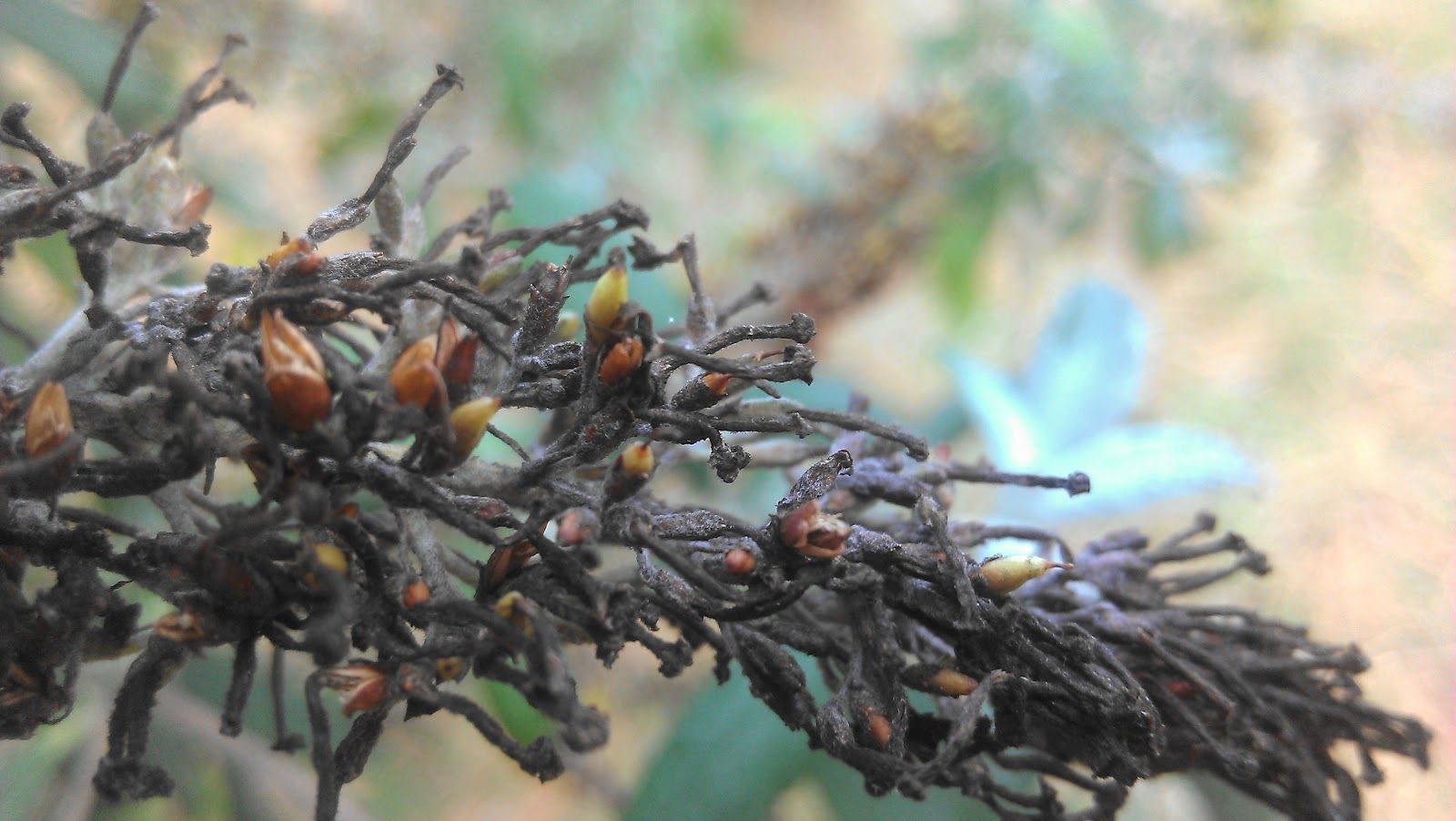
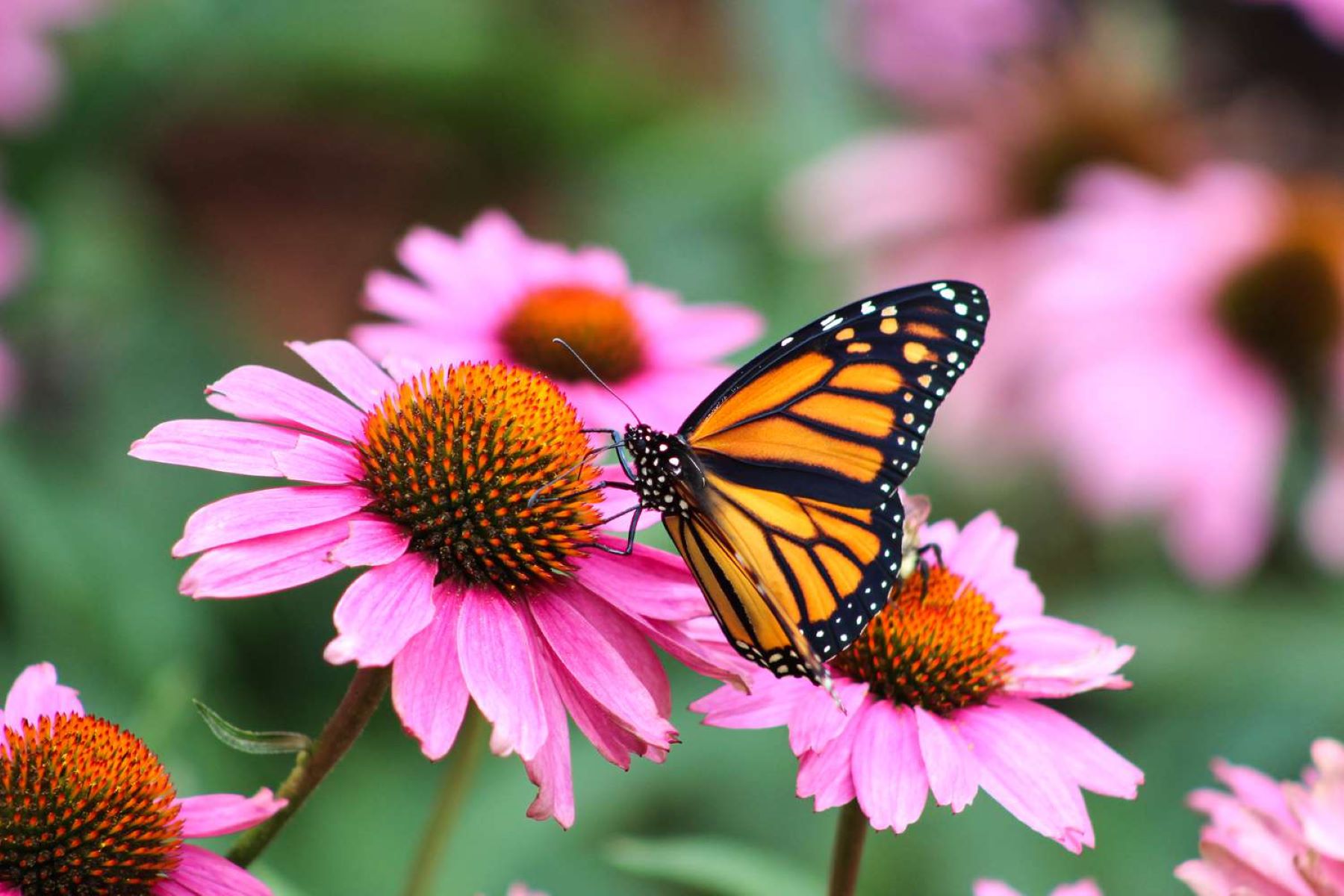
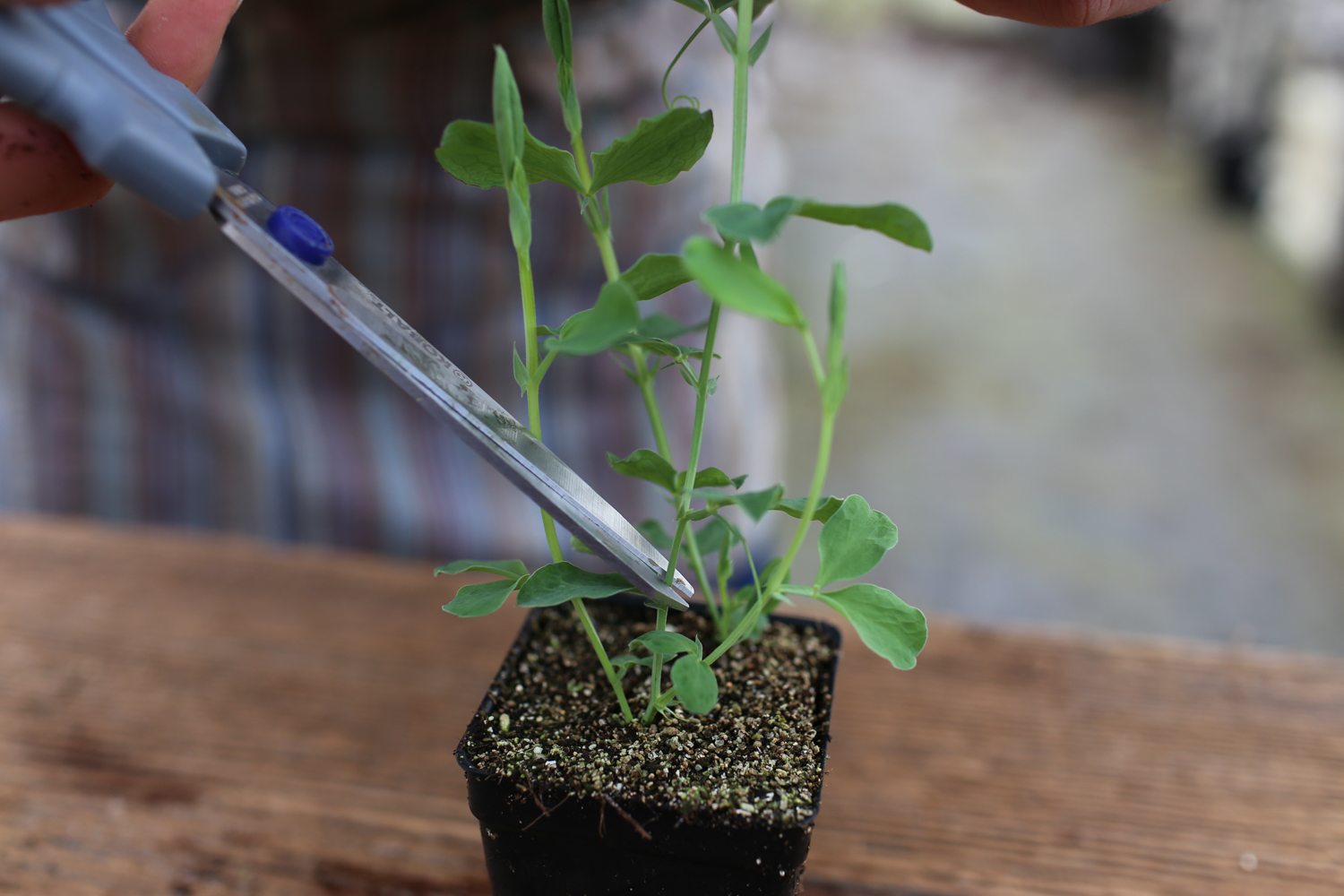
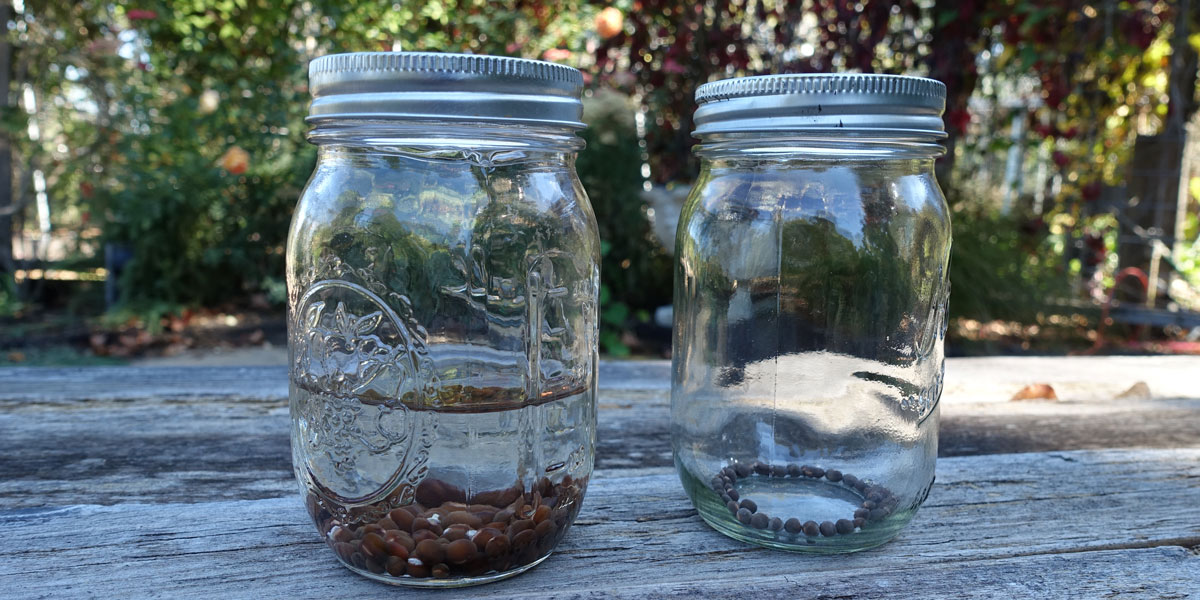
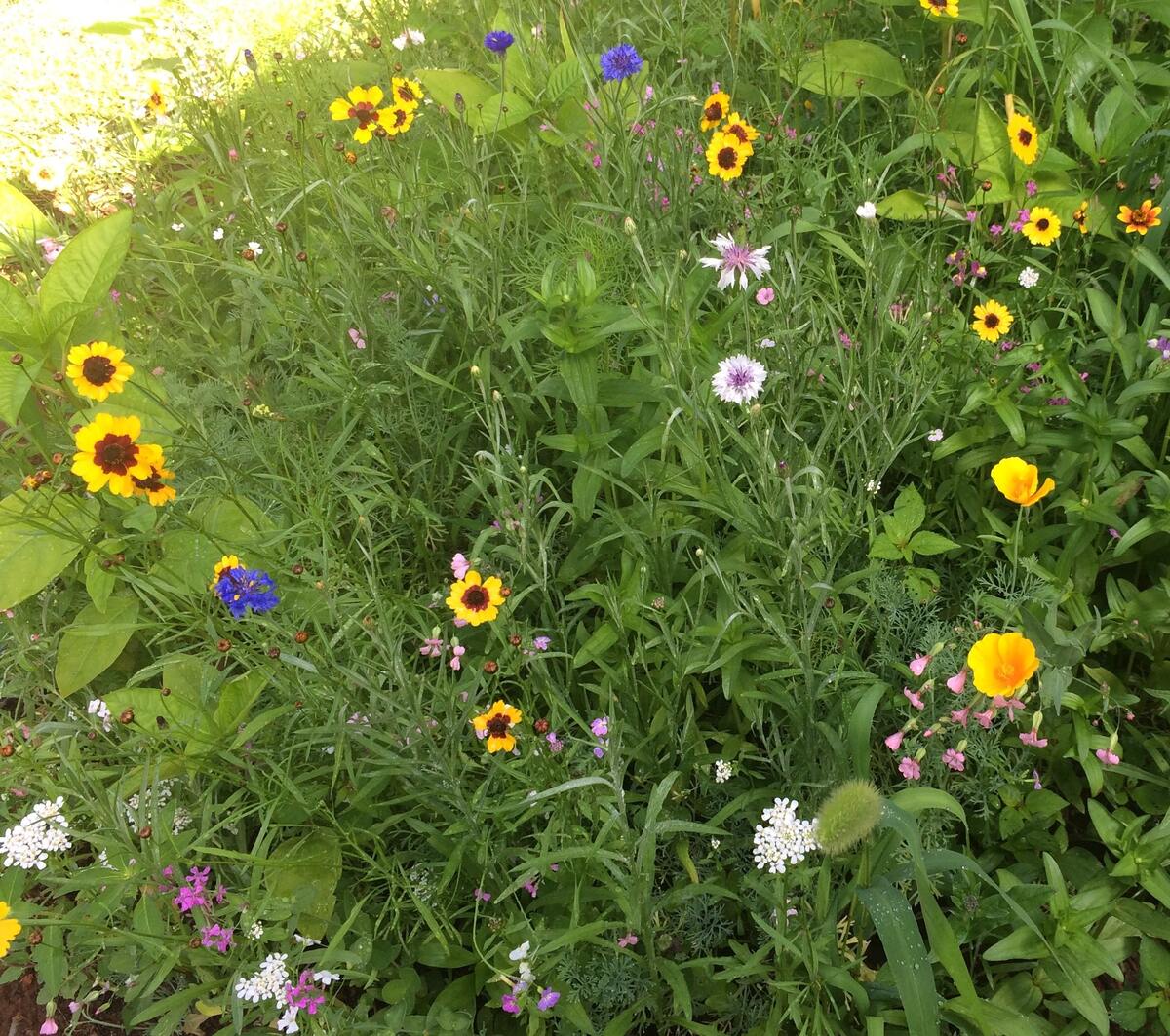








0 thoughts on “When To Plant Butterfly Pea Seeds”